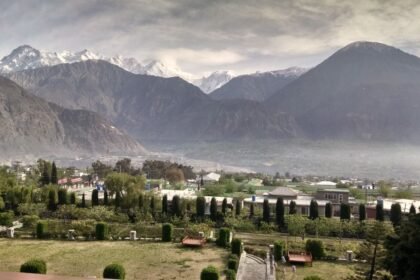As the clock struck midnight in India on July 12, 2025, a small but significant drama unfolded on the social media platform X, drawing attention to the delicate dance of diplomacy in the digital age. The Iranian Embassy in Delhi took a firm stand against a fake account.
@DailyIranNews, which had been masquerading as an official voice of Iran while spreading misleading remarks about India-Iran relations. This incident not only exposed the challenges of misinformation but also underscored the deep, albeit complex, bond between the two nations. The Incident Unfolds the trouble began when
@DailyIranNews posted content that seemed to question the nature of non-state affiliations, prompting a sharp response from the Iranian Embassy’s official handle.
@Iran_in_India. The embassy quickly disavowed any connection to the account, urging the imposter to stop using Iran’s name and flag for personal agendas. The situation escalated as the fake account’s operator, identified through a shared image as a young man possibly from Pakistan or Bangladesh, doubled down, leading to a public call-out by the embassy.
The embassy’s swift response included a screenshot of the offending account’s disclaimer- ironically deleted post-incident-highlighting its claim of being an independent voice, a claim now proven false. A Reflection of Historical Ties this digital skirmish comes against the backdrop of a rich history between India and Iran, stretching back thousands of years. From ancient trade routes to cultural exchanges, the two nations have shared a legacy that predates modern borders.
Even after India’s independence in 1947, which geographically distanced the two, their relationship remained warm, bolstered by mutual interests like the Chabahar port project. This strategic initiative, where India invested $8 billion in 2016 to develop a trade gateway to Afghanistan and Central Asia, stands as a testament to their commitment to cooperation despite geopolitical tensions. However, the relationship hasn’t been without its rough patches. During the Cold War, India’s non-aligned stance and ties with the Soviet Union clashed with Iran’s alignment with the West. The 1979 Islamic Revolution and Iran’s subsequent support for Pakistan in the India-Pakistan conflict further strained ties. Yet, recent years have seen a revival, with high-level exchanges and joint military exercises signaling a desire to move forward.
With studies indicating a surge in such propaganda activities-up by 40% in South Asia over the past two years, according to cybersecurity reports- the involvement of individuals from neighboring countries like Pakistan or Bangladesh raises questions about intent. Whether driven by national interests or personal vendettas, these actions threaten to undermine diplomatic efforts.
For now, the Iranian Embassy’s firm stance has quelled the immediate threat, but it opens a larger conversation about safeguarding diplomatic relations in an era where anyone with a keyboard can play the role of a nation. As the night deepens in Delhi, the episode leaves us pondering: in the age of information, how do we ensure the truth stands tall?




